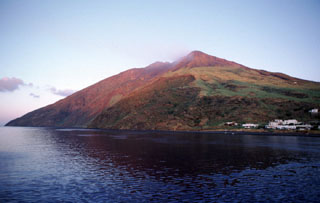Report on Stromboli (Italy) — 24 August-30 August 2016
Smithsonian Institution / US Geological Survey
Weekly Volcanic Activity Report, 24 August-30 August 2016
Managing Editor: Sally Sennert.
Please cite this report as:
Global Volcanism Program, 2016. Report on Stromboli (Italy) (Sennert, S, ed.). Weekly Volcanic Activity Report, 24 August-30 August 2016. Smithsonian Institution and US Geological Survey.
Stromboli
Italy
38.789°N, 15.213°E; summit elev. 924 m
All times are local (unless otherwise noted)
INGV reported that although unfavorable weather conditions often obscured views of the active vents at Stromboli during 16-22 August, some of the hourly explosions were recorded by a webcam. Explosions mainly occurred from two vents in the S part of the crater and one vent in the N part. Low-to-medium intensity explosions from the N vent ejected coarse material mixed with ash. The S vents were variably active, with some explosions ejecting coarse material tens of meters above the crater rim. The report noted that the rate of explosions, geochemistry, and seismicity were all at low, normal levels for Stromboli, with the exception of an increased number and intensity of very-long-period earthquakes on 22 August.
Geological Summary. Spectacular incandescent nighttime explosions at Stromboli have long attracted visitors to the "Lighthouse of the Mediterranean" in the NE Aeolian Islands. This volcano has lent its name to the frequent mild explosive activity that has characterized its eruptions throughout much of historical time. The small island is the emergent summit of a volcano that grew in two main eruptive cycles, the last of which formed the western portion of the island. The Neostromboli eruptive period took place between about 13,000 and 5,000 years ago. The active summit vents are located at the head of the Sciara del Fuoco, a prominent scarp that formed about 5,000 years ago due to a series of slope failures which extends to below sea level. The modern volcano has been constructed within this scarp, which funnels pyroclastic ejecta and lava flows to the NW. Essentially continuous mild Strombolian explosions, sometimes accompanied by lava flows, have been recorded for more than a millennium.

